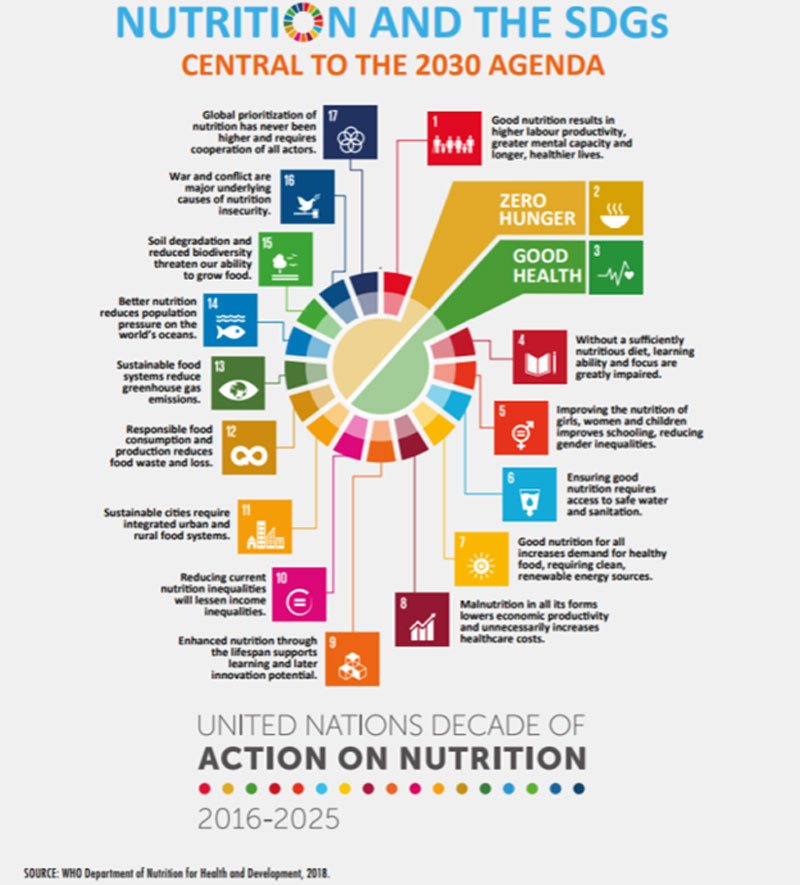
On 3 August 2020, the World Health Assembly passed a resolution WHA73.5 to recognize World Food Safety Day as an important milestone and a platform for raising awareness at all levels about the importance of food safety, and for promoting and facilitating actions to prevent foodborne diseases at local, national, regional and global levels; to strengthen global efforts for food safety to reduce the burden of foodborne disease.
On 20 December 2018 the United Nations General Assembly adopted resolution 73/250 proclaiming a World Food Safety Day. As of 2019, every 7 June is a time to celebrate the myriad benefits of safe food.
A proposal to establish a World Food Safety Day went before the Second Committee of the 73rd session of the United Nations General Assembly. Following their October/November 2018 discussion, it was approved and went before the General Assembly for final adoption.
Costa Rica announced their intention to bring a resolution to the Second Committee of the General Assembly during a meeting on sustainable development at the United Nations in New York on 12 July 2018.
The 40th Session of the FAO Conference in July 2017 adopted a resolution in support of a World Food Safety Day and the World Health Organization expressed their support in December 2017.
The Codex Alimentarius Commission at its 39th session, held in 2016, unanimously agreed to promote a proposal to proclaim a World Food Safety Day on a permanent basis within the framework of the United Nations.

Access to sufficient amounts of safe food is key to sustaining life and promoting good health. Foodborne illnesses are usually infectious or toxic in nature and often invisible to the plain eye, caused by bacteria, viruses, parasites or chemical substances entering the body through contaminated food or water.
Food safety has a critical role in assuring that food stays safe at every stage of the food chain – from production to harvest, processing, storage, distribution, all the way to preparation and consumption.
With an estimated 600 million cases of foodborne illnesses annually, unsafe food is a threat to human health and economies, disproportionally affecting vulnerable and marginalized people, especially women and children, populations affected by conflict, and migrants. An estimated 420 000 people around the world die every year after eating contaminated food and children under 5 years of age carry 40% of the foodborne disease burden, with 125 000 deaths every year.
World Food Safety Day on 7 June aims to draw attention and inspire action to help prevent, detect and manage foodborne risks, contributing to food security, human health, economic prosperity, agriculture, market access, tourism and sustainable development. The World Health Organization (WHO) and the Food and Agriculture Organization of the United Nations (FAO) jointly facilitate the observance of World Food Safety Day, in collaboration with Member States and other relevant organizations. This international day is an opportunity to strengthen efforts to ensure that the food we eat is safe, mainstream food safety in the public agenda and reduce the burden of foodborne diseases globally.

Under the slogan “FOOD SAFETY, EVERYONE’S BUSINESS”, the action-oriented campaign promotes global food safety awareness and calls upon countries and decision makers, the private sector, civil society, UN organizations and the general public to take action.
The way in which food is produced, stored, handled and consumed affects the safety of our food. Complying with Global food standards, establishing effective regulatory food control systems including emergency preparedness and response, providing access to clean water, applying good agriculture practices (terrestrial, aquatic, livestock, horticulture), strengthening the use of food safety management systems by food business operators, and building capacities of consumers to make healthy food choices are some ways in which governments, international organizations, scientists, the private sector and civil society work to ensure food safety.
Food safety is a shared responsibility between governments, producers and consumers. Everybody has a role to play from farm to table to ensure the food we consume is safe and will not damage our health. Through World Food Safety Day, WHO and FAO pursue efforts to mainstream food safety in the public agenda and reduce the burden of foodborne diseases globally.
Keeping food safe is a complex process that starts on the farm and ends with the consumer. All stages of the food chain, from production, harvest and storage to preparation and consumption, must be considered. The Food and Agriculture Organization of United Nations (FAO) is the only international organization overseeing food safety along all aspects of the food chain.
Through a longstanding partnership, FAO and the World Health Organization (WHO) support global food safety and protect consumers’ health. FAO addresses food safety issues along the food chain during production and processing, while WHO typically oversees relationships with the public health sector. Safeguarding food, so that it is safe to eat doesn’t stop with its purchase, though. At home, consumers have a part to play in making sure that what they eat remains safe.
GOAL 1: Food safety is key to achieving several of the Sustainable Development Goals and World Food Safety Day brings it into the spotlight, to help prevent, detect and manage foodborne risks. Safe food contributes to economic prosperity, boosting agriculture, market access, tourism and sustainable development.
GOAL 2: There is no food security without food safety. Ending hunger is about all people having access to safe, nutritious and sufficient food all year round.
GOAL 3: Food safety has a direct impact on people’s health and nutritional intake. Foodborne diseases are preventable.
GOAL 4: When countries strengthen their regulatory, scientific and technological capacities to ensure that food is safe and of the expected quality throughout the food chain, they move towards more sustainable patterns of food production and consumption.
GOAL 5: A globalized world with annual food exports currently in excess of USD 1.6 trillion and complex food systems demands international cooperation across sectors to ensure food is safe. Food safety is a shared responsibility among governments, food industries, producers and consumers.
